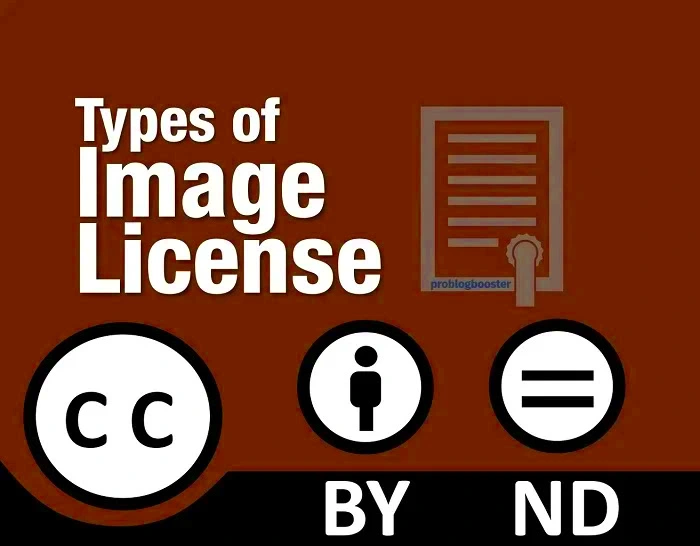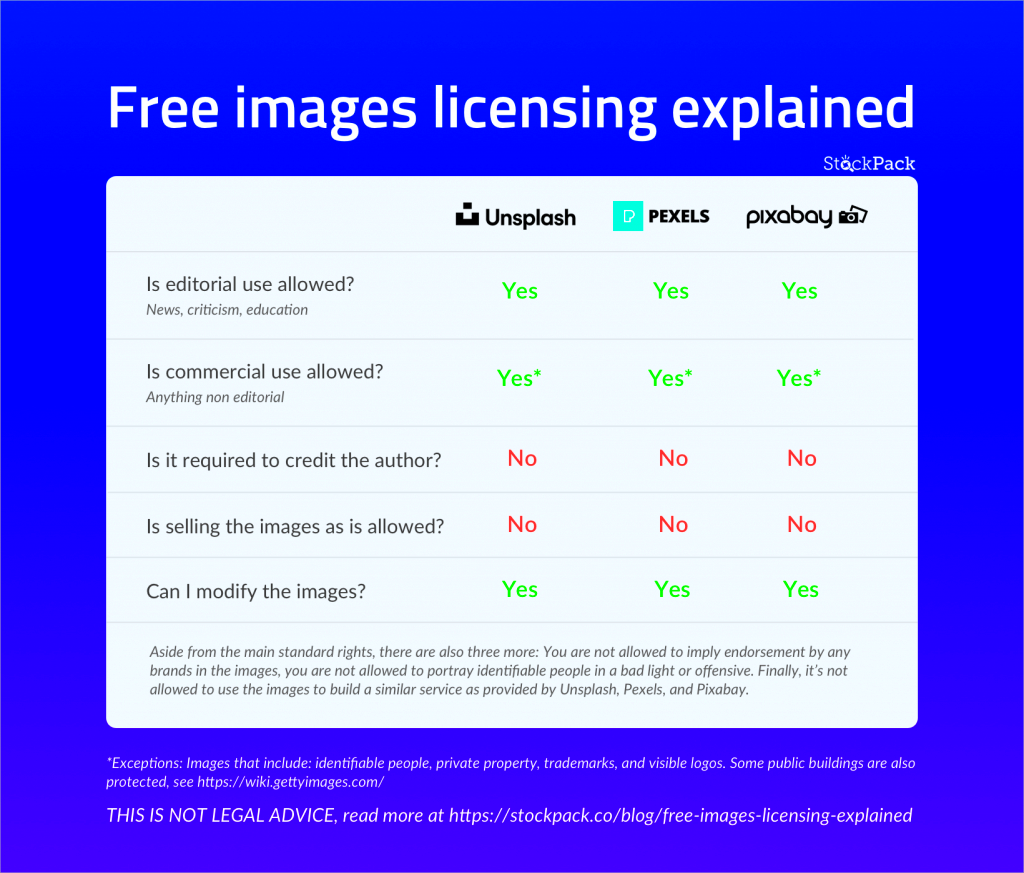When you're using images online, it's important to understand image licensing. An image license determines how you can legally use a particular
In this guide, we’ll walk you through the basics of image licensing, the different types of licenses you may encounter, and how to check the license of an image before using it. By the end, you'll have a clearer understanding of how to legally use images without facing any risks.
Understanding Different Types of Image Licenses

Image licenses can vary, and it's important to know the differences so you can choose the right one for your needs. Below are some common types of image licenses you’ll encounter:
- Royalty-Free License: This is one of the most popular types of licenses. It allows you to use the image multiple times for various purposes after you purchase it, without paying additional royalties. However, this doesn’t mean the image is free, just that it doesn’t require extra payments for each use.
- Rights Managed License: This type of license is more specific. It means the image can only be used in the agreed-upon context and may be limited in duration, geographic location, or other factors. You pay for each usage, and the terms are strict.
- Creative Commons License: Some images are offered under Creative Commons (CC) licenses. There are various subtypes, including those that allow you to use images freely with attribution or others that restrict commercial use.
- Editorial Use Only License: Images with this license are for non-commercial, editorial use only—such as in newspapers, magazines, or blogs. They can't be used for advertising or promotional purposes.
- Extended License: This is a paid license that allows you to use an image in a broader range of ways, such as for commercial purposes or even for reselling the image as part of a product.
Understanding these types helps you choose the right license based on how you intend to use the image, ensuring you avoid copyright infringement.
Also Read This: How to Export Lightroom Photos to Behance and Showcase Your Photography Work
How to Find the License of an Image

Before using any image, it’s essential to check its license to avoid legal issues. Here’s a simple guide to help you find the license of an image:
- Check the Website or Source: Most stock image websites, including platforms like HDStockImages, clearly display the licensing details of each image. Check the image page for information about whether it’s royalty-free, rights-managed, or subject to other restrictions.
- Look for License Information in the Image’s Description: Many images, especially those available under Creative Commons, will have the license terms listed in the image description or metadata. Look for a section that mentions the license type and what uses are allowed.
- Use Reverse Image Search: If you found an image online and are unsure about its license, you can use tools like Google’s Reverse Image Search to find where else the image has been published and check if any licensing information is provided by those sources.
- Contact the Image Owner: If you’re unsure about an image’s license or if it’s not clearly listed, contact the image owner directly. They can clarify the terms and may even offer a custom license for your specific use.
- Review Copyright Metadata: Some images contain copyright metadata embedded in the file itself. You can check the image’s EXIF or IPTC data to see if the licensing information is included. Tools like Adobe Photoshop or free EXIF viewers can help with this.
Always double-check the image's license before using it in your project. Even if it’s available online, using an image without proper licensing can result in fines or legal consequences.
Also Read This: Steps to Create a 100×100 Pixel Image
Common Image License Restrictions
When you use an image, it’s essential to understand the restrictions that come with its license. Even if an image is free to use, there are often rules that determine how and where you can use it. These restrictions help protect the copyright owner’s rights and prevent misuse. Below are some of the most common restrictions you may encounter:
- Non-Commercial Use Only: Some licenses limit the image's use to non-commercial projects, meaning you can’t use them in advertisements, promotional materials, or products that generate income. Make sure the license allows commercial use if your project involves any form of revenue.
- Attribution Requirement: Many images, especially those under Creative Commons licenses, require that you credit the original creator. This usually means including the creator’s name and a link back to the source image in your project.
- Exclusive Use: Certain licenses may give you exclusive rights to use an image for a limited period. While this allows you to use the image without competition, it also means others can’t use the same image during that time.
- Modification Restrictions: Some licenses don’t allow you to modify or alter the image in any way. If you plan to edit, crop, or add elements to an image, make sure the license permits it.
- Geographic and Time Limitations: Certain licenses restrict the use of images in specific locations or for a limited time. For example, you may only be able to use the image in a particular country or for a certain number of months.
Understanding these restrictions helps you avoid accidentally violating the terms of the image license and ensures your project remains legal and ethical.
Also Read This: How to Overlay Two Images in Preview for Mac Users
How to Use Images Legally
Using images legally is about respecting the rights of creators and complying with licensing terms. Here’s a step-by-step guide on how to make sure you’re using images the right way:
- Check the License: Before using an image, always check its license to understand the permissions and restrictions. As mentioned, licenses can vary, and not all of them will allow you to use images freely.
- Give Proper Credit: If the license requires attribution, make sure to give proper credit to the image creator. This often involves including their name and a link to the source, either on the image itself or in the credits section of your content.
- Follow Usage Guidelines: Some licenses come with detailed usage guidelines. For example, you might need to ensure that an image isn’t used for certain types of projects, like commercial advertising. Always follow these rules to avoid legal trouble.
- Consider Purchasing Extended Rights: If you plan to use an image in a commercial project or want more flexibility, consider purchasing an extended license. This will give you additional rights, such as the ability to use the image for merchandise or in a broader scope of marketing materials.
- Use Public Domain or Creative Commons Images: If you're concerned about licensing fees, consider using images from the public domain or those offered under Creative Commons licenses. Just be sure to check the specific terms of use and whether attribution is required.
By following these steps, you can use images legally without worrying about copyright infringement or other legal issues.
Also Read This: Mastering the Use of Adobe Stock Resume Templates
Why Image Licensing Matters for Your Projects
Image licensing isn’t just a technicality—it’s an important part of managing your projects and staying within the law. Whether you’re using images for a blog, website, or marketing campaign, understanding image licensing helps protect your work and reputation. Here’s why it matters:
- Avoid Legal Issues: Without the proper license, you could face lawsuits, fines, or take-down requests for using copyrighted images. Legal battles can be expensive and time-consuming, and they can damage your professional reputation.
- Ensure Fair Compensation: Image licenses are designed to fairly compensate creators for their work. By respecting these licenses, you support artists and photographers, ensuring they receive proper credit and payment for their efforts.
- Protect Your Projects: When you use images legally, you can confidently showcase your work, knowing you’re not violating any copyright laws. This is especially important for businesses and marketers who need to build trust with their audience.
- Improve Your Professionalism: Using licensed images shows that you respect intellectual property rights, which adds to your credibility and professionalism. It can also help build trust with potential clients, partners, and customers.
- Avoid Content Take-Downs: Without proper licensing, platforms like social media or even your own website may remove your content if it's flagged for copyright infringement. Having the right image license protects your content from removal or penalties.
In short, image licensing helps you avoid problems, support creators, and keep your projects running smoothly. Understanding and following the rules is key to maintaining a professional, legal, and successful project.
Also Read This: How to Copy a Font from an Image for Text Matching
FAQs About Image Licensing
If you're new to image licensing, you may have several questions. Here are some frequently asked questions to help clear up any confusion and provide more clarity on how image licenses work:
- What is an image license?
An image license is a legal agreement that specifies how you can use an image. It defines what you can and cannot do with the image, such as whether you can modify it, use it commercially, or share it with others. - What’s the difference between "royalty-free" and "rights-managed" licenses?
A "royalty-free" license allows you to use the image multiple times after you purchase it without paying additional royalties. A "rights-managed" license, on the other hand, is more specific and limits how, when, and where you can use the image. Rights-managed images often require additional fees for each use. - Can I use a Creative Commons image for commercial purposes?
It depends on the specific Creative Commons license. Some Creative Commons licenses allow commercial use, while others do not. Always check the specific terms of the license before using the image in a commercial project. - Do I always need to give credit for images?
If the license requires attribution, yes, you must credit the image creator. Many Creative Commons licenses require you to provide the creator's name and a link to the original source. For royalty-free images, attribution is often optional but always check the specific terms. - What happens if I use an image without the proper license?
Using an image without the proper license can lead to legal consequences, including fines or copyright infringement lawsuits. In some cases, the image owner might request that the image be removed or demand payment for unauthorized use. - How do I know if an image is free to use?
Always check the licensing information provided on the image’s website or platform. Some images are labeled as free or in the public domain, but you should still verify the usage rights before incorporating them into your project.
Conclusion: Stay Safe with Proper Image Licensing
In conclusion, understanding and following image licensing rules is crucial for avoiding legal issues and ensuring that you respect the rights of creators. Always check the license before using an image, and be mindful of any restrictions or requirements. By doing so, you protect yourself and your projects, while supporting the creative community.

 admin
admin








